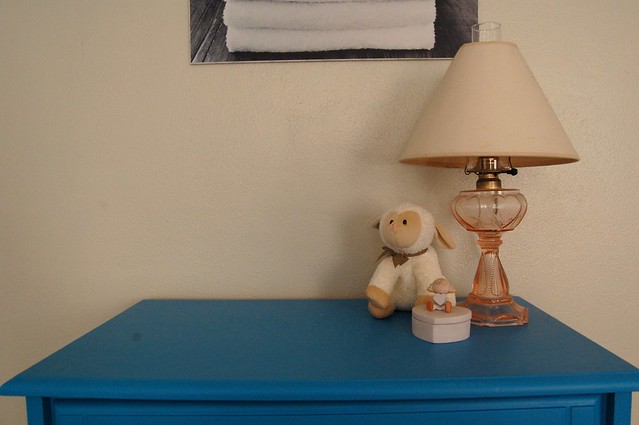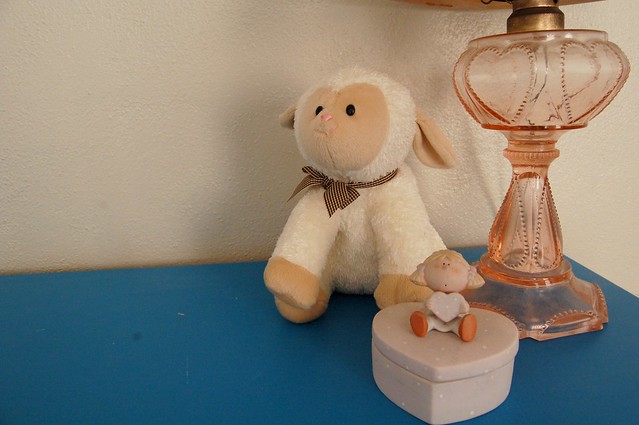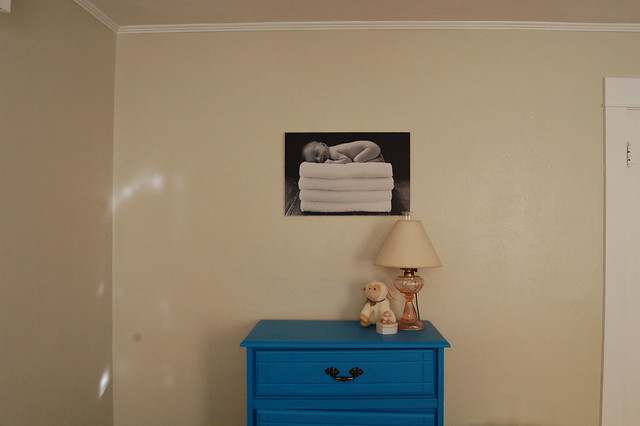Earlier I wrote this week about how lenses function differently and I thought I'd give a clearer picture (excuse the pun) of what that means. When I talk about focal lengths like 18mm or 55mm, I am referring to the amount of magnification in the lens. The higher the number, the more magnified. This doesn't only apply to SLRs. Point-and-shoot cameras usually have a zoom feature that's marked T or W, with T increasing magnification.
 55mm
55mmFor the next photo, I set the lens back to 18mm and walked closer to the dresser. Note the changes from the previous photo, particularly the distortion in the dresser. 18mm is a wide angle lens setting, meaning that it offers a wider angle of view. It also distorts the subject.
 18mm
18mmNote the same changes in the next photos. The first shot at 55mm, standing farther from the dresser; the second at 18mm and physically closer. See how the lamp gets distorted in the second photo?
 18mm
18mmApparently a lens at 50mm responds most like the human eye, without distortion. And a low focal length captures the magnitude of a scene or tells a story, cramming as much into the photo as possible. The differences may be subtle, but I hadn't recognized these changes in the lens when changing the focal length. There are other differences, too, like how objects at a distance relate to each other in the photo when the focal length changes. You can see a bit of that in the last two photos (if the objects were farther apart, you would see the difference more clearly).
One thing this has taught me is to get physically closer to my subject when I can. Often I just zoom in if I'm not close enough and don't consider how the photo would be different (and maybe better) if I take a few steps toward my subject.
It's amazing to me what cameras are able to do. I suggest you get your camera out and play around with the focal lengths for yourself. It's a fun exercise and one small step toward becoming a better photographer.


4 comments:
Very nice demonstration of the differences. I have the opposite issue - I shoot almost exclusively with a prime lens, so when I do happen to put on a lens that I can zoom with, I tend to forget it's even possible and continue to do all the "zooming" with my feet. :)
interesting... i didn't know that. friend of mine recently told me he likes to just go out and shoot everything with one prime lens as an exercise in how a little imposed restriction can inspire new creativity.
also, i've been inspired by your shots (and your lovely essay) to try my hand at film this year. was planning to email you for advice on how to get started, but i'll have to wait until i finish up a couple things at hand before i dive head first into all that. :)
super cool! I am really looking forward to learning more about photography in 2011!
Bethany, I know what you mean. I have a prime lens for my film camera, and sometimes think it helps me get a better shot.
Julie, I can't wait til you shoot film. Email me when you can. This is something I could go on and on about (in case you couldn't tell!).
Jessie, I can't wait to see what you do with your new camera this year. Exciting!
Post a Comment